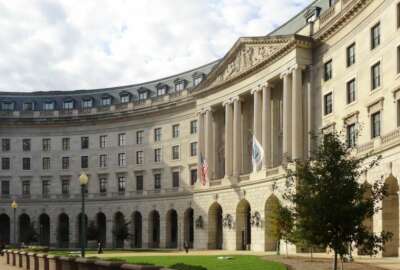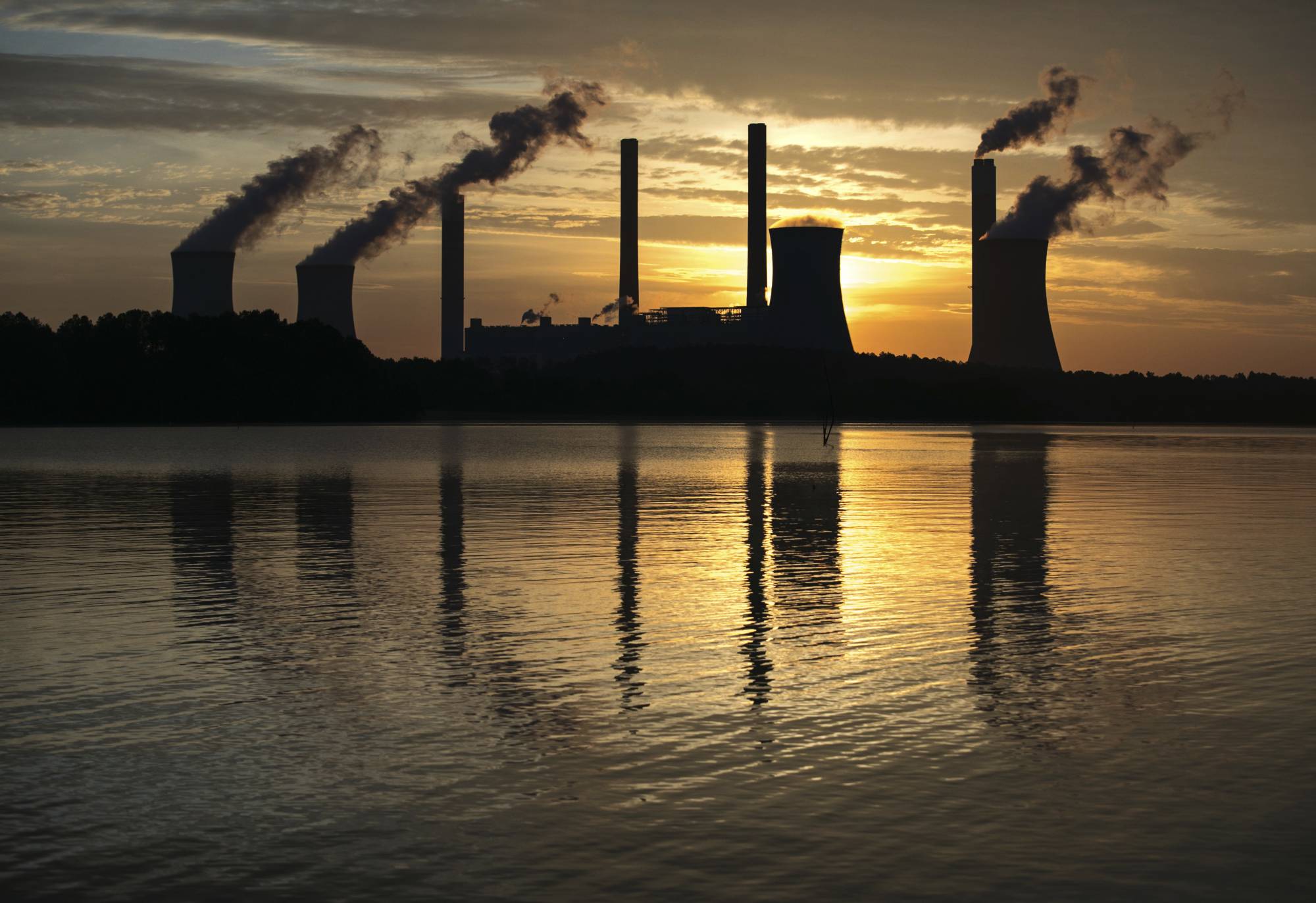
The EPA’s 8 big challenges for 2023
From chemical safety to data security, the Environmental Protection Agency has a range of management and performance challenges in 2023. The list was developed, as...
Best listening experience is on Chrome, Firefox or Safari. Subscribe to Federal Drive’s daily audio interviews on Apple Podcasts or PodcastOne.
From chemical safety to data security, the Environmental Protection Agency has a range of management and performance challenges in 2023. The list was developed, as legally required, by EPA’s office of inspector general. To get the details, the Federal Drive with Tom Temin talked with acting chief strategy officer Adam Seefeldt.
Interview transcript:
Tom Temin
I just have a question about your job title, you are acting and with that understanding the title of chief strategy officer is something you don’t hear a lot of in OIG. So tell us what that job is all about. I think people be interested.Adam Seefeldt
Sure. Currently, the office I manage is called the Office of Strategic Analysis and results. And it has two directorates one, the data analytics directorate, and the other one is called strategic planning and initiatives. And so my responsibility as the chief strategy officer is to kind of be forward thinking for the OIG and be able to plan out ahead, as the title suggests, so for the OIG, in general thinking of strategic areas that we can potentially go into in the future, on the data side, thinking of ways to use data analysis, data visualizations, data acquisition, those areas and trying to improve those areas.Tom Temin
All right, so you have the list now of the eight areas that the EPA needs to deal with, let me ask you this, is this the list of the same things they always have to deal with? Or are these particular eight, something that are of special concern? And there’s 80 others that seem to be OK, in other words, how did you come up with this list of eight items?Adam Seefeldt
So these are seven of the challenges have been around for the last couple of years. But this year, we did add an additional challenge or eighth challenge. And that challenge deals with infrastructure and the money that’s been appropriated through the bipartisan infrastructure law.Tom Temin
And what is EPA’s connection to what might be happening under the infrastructure law?Adam Seefeldt
Under the new appropriations, EPA is going to be responsible, they’re going to have essentially an unprecedented level of funding under this act, to the tune of around 60 billion over the next five years. So the EPA is going to be challenged to prevent fraud, and promote efficiency with this new money. So as part of our task, we provide the oversight to make sure that there is no fraud, waste, abuse, or mismanagement trying to detect and prevent that sort of thing.Tom Temin
Got it, the infrastructure projects that will be pursued throughout the country, may be funded by different agencies often have an environmental oversight component to them, almost everything anyone does in the country runs through an environmental review. So as some of this money to help the EPA make sure that they’re up to that task. Because say, for example, Federal Highway Administration got 10s of billions every year for five years. So every road they fund, in theory could require an environmental impact statement.Adam Seefeldt
A bulk of the money that EPA will be getting under the infrastructure act, it’s going to be centered around partner programs, such as the Clean Water and Drinking Water State Revolving funds. That’s where the bulk of this money is going to go. If the EPA, and its program partners do not conduct the proper oversight for these sorts of we call them SRFs, then the infrastructure projects are going to be at an increased risk of fraud, waste, and abuse. So it’s going to be our job to provide the oversight in those areas.Tom Temin
And part of that oversight includes not just fraud, but to make sure that what gets built meets standards for the water it actually delivers?Adam Seefeldt
That is correct.Tom Temin
OK. And looking at the other list of seven items, a few well, they’re all important, I guess. But one is providing for the safe use of chemicals, for example, this is a core EPA program. There’s an office of chemicals, I believe, and what is say the challenge there since it’s been an ongoing function since the inception of the EPA?Adam Seefeldt
Yeah, so for this challenge that public must be able to depend on the EPA’s ability to conduct credible and timely assessment of the risk posed by things like pesticides, toxic chemicals, and other environmental chemicals. So you mentioned in office, you know, there’s Office of Chemical Safety and Pollution Prevention, for example, that faces deep staffing shortages and a lack of planning that could negatively impact critical chemical work. So this is an example of the sort of challenge that could be facing EPA.Tom Temin
So it’s what the GAO might call a high risk area for the EPA in the coming year?Adam Seefeldt
Potentially.Tom Temin
Sure. And the other one I wanted to ask you about is the need to protect critical infrastructure agency systems against cyber threats. Every agency faces this is the EPA pretty well positioned to deal with it, do you think?Adam Seefeldt
They continue to work you know, it’s always a work in progress. They’re making progress. We just released a report recently our audit team did dealing with water cybersecurity. So I encourage everyone to go to our website and look at that report, it just recently came out. So the cyber threat challenge that touches upon the idea that, you know, information technology, it’s fundamental essential resource for the EPA must carry out its mission. And the agency really needs to ensure that its systems and our nation’s critical infrastructure are protected from cyber threats. You know, there have been instances recently in the news about such things. So an example of a challenge in this area is, you know, with the EPA systems and networks interfacing with other internal and external systems and networks, including the internet, and a significant number of remote workers, EPA data becomes more vulnerable to threats and cyber attacks. So this is a challenge for the EPA to manage.Tom Temin
We’re speaking with Adam Seefeldt. He’s acting chief strategy officer at the EPA Office of Inspector General. And the last one I wanted to touch on briefly was the idea of safeguarding scientific integrity principles. And this is something we’ve seen come up in a lot of agencies over the last few years where maybe there’s political influence over what a policy that the staff comes up with this kind of thing. What is the issue do you see that they need to watch out for in the coming year?Adam Seefeldt
So safeguarding scientific integrity principles touches upon is the idea that the EPA must ground science based decisions and principles of scientific integrity to ensure that human health and the environment are protected by using the best available science. So for example, the EPA has identified numerous actions it has taken to promote scientific integrity. Despite this, the OIG has found examples in which some parts of the agency did not complete required internal peer reviews of scientific documents, for example, and they did not follow standard operating procedures and requirements for scientific assessments. So moving forward, this is a challenge that the EPA is going to have to address.Tom Temin
Sure. And what has been the agency’s response so far? Do they say, you know, Adam, you’re right, we’re gonna get after these.Adam Seefeldt
They’re working on it. They’re aware of them, and they are working on them.Tom Temin
It’s across the board, really, and just briefly review the process that you go through to come up with these particular recommendations.Adam Seefeldt
So we get input from various sources. So the OIG, EPA OIG doesn’t come up with these TMCs, the top management challenges in a vacuum, first of all, the TMCs. I’ll call them TMCs, just for brevity, they’re forward facing. And so we draw upon our own staff, work experience, agency input, public comments, those are the type of inputs that we use to develop the TMCs.Tom Temin
So it’s not strictly looking internal to the agency, but looking at regulated parts of the world that it deals with, for example.Adam Seefeldt
Right, we get input from everywhere.Tom Temin
So is it safe to say that these top eight management challenges they were seven, you added one this year, this is going to drive the oversight agenda for the OIG too as well write in 2023?Adam Seefeldt
That’s right. And it’s important to note that the TMCs, that’s what we use EPA OIG to inform our work. And so our audits or evaluations or investigations, they are essentially, in general, they’re tethered to these top management challenges. And also to we have an oversight plan each year that we develop that oversight plan is also tethered to these top management challenges. So the oversight plan is composed of our planned projects, our ongoing projects. So each year, we also tether those TMCs to our oversight plan.Tom Temin
Right. So nobody in the agency should be shocked when you come around and look at those particular areas, then, should they?Adam Seefeldt
No. And in fact, it gets back to the point of you know, how did we come up with these TMCs one of our inputs was the agency itself leadership, and staff.
Copyright © 2025 Federal News Network. All rights reserved. This website is not intended for users located within the European Economic Area.
Tom Temin is host of the Federal Drive and has been providing insight on federal technology and management issues for more than 30 years.
Follow @tteminWFED





